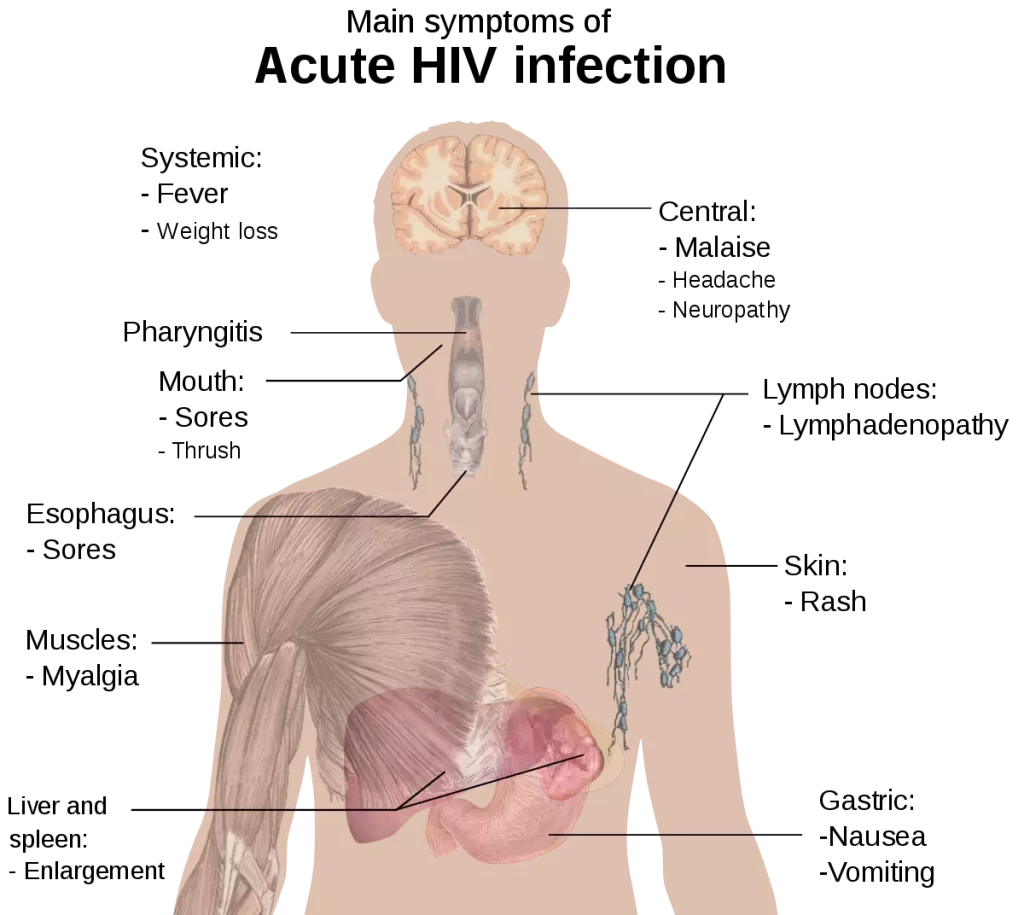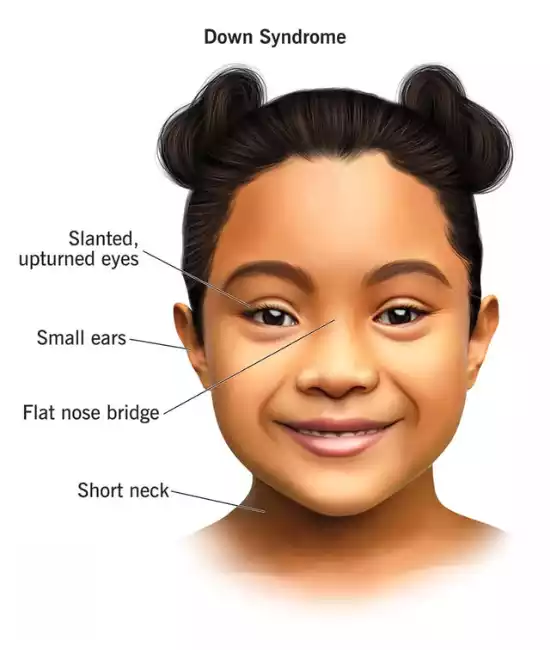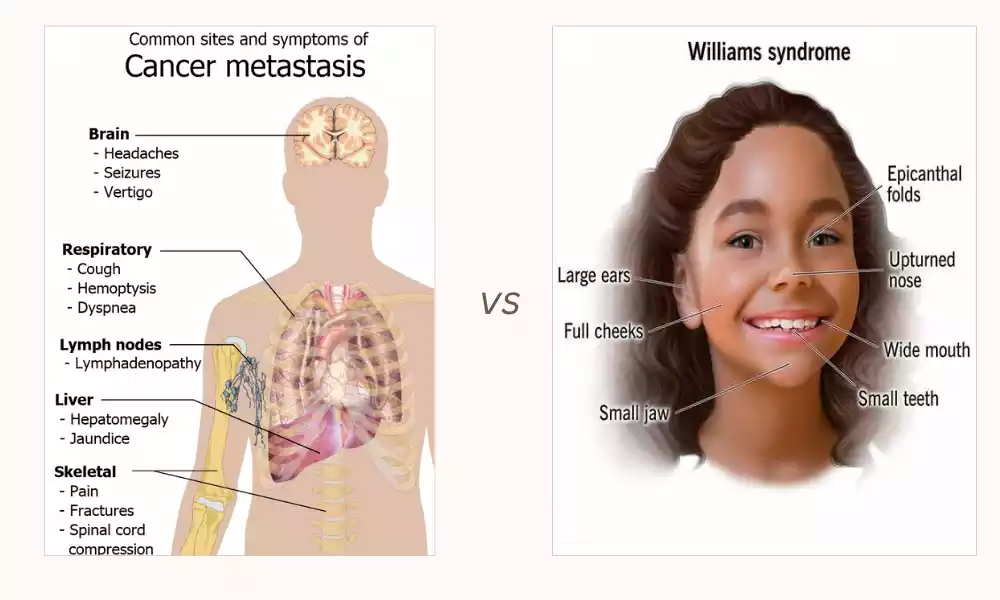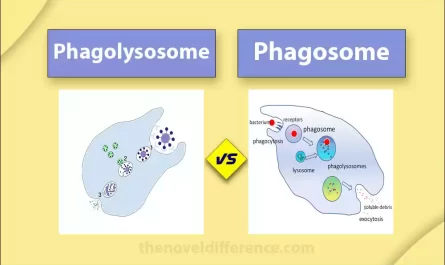Definition of Symptom
A symptom is any evidence that can be seen as subjective of a condition or patient’s illness. It’s what the patient is feeling and describes. Because it’s subjective, it’s not able to be measured or observed by other people. For instance, pain, anxiety, and fatigue are all manifestations due to personal experiences.
Characteristics of Symptoms:
- Subjective: It is only the person who is able to describe or comprehend the precise nature of the symptoms. It’s based on the perception of the individual.
- Variant presentation: Two people with similar conditions may describe their symptoms in different ways.
- Doesn’t always correlate with changes that can be observed: Symptoms don’t always correspond to tangible or visible changes to the body. For example, a person might feel pain but not have an obvious injury.

Definition of Syndrome
A syndrome On the other hand is a collection or a cluster of symptoms and/or symptoms that are present together and are indicative of a particular disorder or condition that is abnormal. It’s more than one symptom that is isolated. The names of the syndromes are usually based on someone who originally recognized them, or in reference to the most common characteristics of the disorder.
Characteristics of Syndromes:
- The Cluster of Signs: Disorders are diagnosed by specific symptoms and signs that are coexisting.
- Pattern Recognition: With time, and in numerous cases doctors and researchers begin to recognize patterns, and identify them as a specific disorder.
- The causes: The underlying causes of a disorder can differ. Certain syndromes have a well-known reason (e.g. genetic mutation) and others don’t.

Key Comparison Chart
Here’s a best comparison chart to differentiate between “Symptom” and “Syndrome”:
| Criteria | Symptom | Syndrome |
|---|---|---|
| Definition | A phenomenon or change experienced by an individual related to their physical, emotional, or cognitive condition. | A collection of symptoms (and sometimes signs) that consistently occur together, denoting a recognizable pattern. |
| Nature | Subjective (based on patient’s experience). | Can be both subjective (based on experiences) and objective (observable by others). |
| Representation | Singular occurrence or manifestation. | Group or collection of manifestations. |
| Indication | Reflects an underlying issue or condition but does not specify what that condition is. | Points towards a specific condition or set of related conditions, even if the exact cause isn’t always clear. |
| Example | Headache, dizziness, fatigue. | Down syndrome, metabolic syndrome, polycystic ovary syndrome. |
| Role in the Medical Field | Used as an indicator to explore and diagnose an underlying condition. | Used to identify a specific condition or pattern, guiding diagnostic tests and treatment plans. |
| Treatment Approach | Often symptomatic relief; targeting the specific complaint. | Holistic approach, addressing multiple facets of the condition or the root cause if identified. |
The Importance of Distinguishing Between Symptom and Syndrome
1. Diagnosis and Treatment
A proper diagnosis is the foundation of a successful medical treatment. Not understanding the distinction between symptoms and syndromes could lead to incorrect diagnoses that could cause ineffective or incorrect treatment.
- Symptoms: A symptom is a mental or physical manifestation that is noticed or felt that indicates the existence of a specific health issue or illness. For instance, headaches or fever are all symptoms. These symptoms are subjective, meaning they’re usually explained by the person who is experiencing them.
- Syndrome: A syndrome is, in contrast is a collection or collection of symptoms and symptoms that are all indicative of the specific condition or disease. A syndrome is often unable to be defined with a single characteristic, but rather as a series of symptoms. One example could be Down syndrome. This is characterized by the appearance of a particular facial feature as well as intellectual disabilities and various health issues.
In many instances, it is not advisable to focus on only specific symptoms and not considering whether there is a syndrome could result in a fragmented approach to treatment that might not address the root problem.
2. Communication in Healthcare
Communication between healthcare providers and patients is vital to trust, understanding, and compliance. If healthcare professionals and patients employ terms such as symptom or syndrome appropriately, they help reduce confusion and provide certainty.
3. Medical Research and Advancements
Research in science is often centered around studying symptoms and disorders. By separating the two researchers can create targeted research that focuses on reducing symptoms in a particular area or tackling the larger syndrome. This will result in more effective treatments or cures.
Similarities Between Symptom and Syndrome
Although there are two distinct words, symptoms and syndromes share the same characteristics:
1. Both Indicate Underlying Health Issues
The symptoms and the syndromes function as indicators of health issues. A symptom is a sign of an anomaly, whereas the term “syndrome” refers to an array of disorders that are typically seen together.
2. Both Can Vary in Intensity and Duration
Like a symptom, pain may be severe or mild long-lasting or short-lived, and can be exhibited in different ways for different people. For instance, those with the same disorder may display a different mix of symptoms or have different levels of severity.
3. Both Require Medical Assessment for Accurate Interpretation
It is crucial to know that although symptoms and signs can provide information about a person’s health, self-diagnosis is often prone to be inaccurate. Only a qualified medical professional is able to accurately determine the meaning of these indicators and advise the best course of steps.
The Importance of Context
1. Varied Manifestation
It is possible for symptoms to arise from a variety of reasons. For instance, fevers could result from a variety of inflammation conditions, or specific medications. A similar way, a condition may have different forms of manifestation. This is why context is important. A fever that is the result of an excursion to a tropical location could be viewed in the context of dengue or malaria however, a fever that causes joint pain or a rash could be viewed as a sign of Lyme disease.
2. Evolution Over Time
The progress of a disorder or symptom can provide crucial clues as to the nature of the problem. In the case of acute symptoms, they could be a sign of injuries or infections, whereas chronic ones could indicate chronic conditions such as an autoimmune disease. The development of new symptoms may change a group of symptoms previously unrelated to one another into a distinct disorder.
3. Interactions and Combinations
These symptoms aren’t always present in isolation. The combination of symptoms and interactions could suggest specific disorders. For example, the combination of small size, delayed puberty, and infertility may point to Turner syndrome.
4. Patient History and Background
The setting in the context in which a condition or symptom occurs often offers clues to the cause. The family history, lifestyle choices as well as past exposures and other elements can all play a role in determining this medical mystery.
5. Broader Implications
Knowing the context behind the symptom or disorder could have wider implications for public health. Being able to recognize patterns early–like the sudden increase in a particular symptom in an area of a particular geographic region–may result in the early detection of epidemics or outbreaks.
Misunderstandings & Misconceptions
-
- Definition Confusion:
-
- Symptom: A symptom the experience of the individual in relation to changes in their emotional, physical, or mental state. This is a subjective signification and is based on what the patient is experiencing and reports. For instance, headaches nausea, dizziness, or headache are all symptoms that describe the experience of a patient.
- Syndrome: A syndrome on the other hand is a set or a group of symptoms that occur in a group, and could or not be associated with particular physical signs or symptoms. It indicates a pattern that is identifiable regardless of the reason. A good example of this is Down syndrome which is defined by a set of signs and symptoms, including particular facial features as well as intellectual disabilities and other health problems.
- Single as opposed to. Collective: One of the main misconceptions is that syndromes and symptoms are interchangeable. A symptom is an individual event while a syndrome is the collection of signs and symptoms.
- Cause and. Effect: Many individuals believe that the sign is the reason for an illness, but it’s really an indication of an underlying issue. The symptom doesn’t necessarily point to a cause-specific, but rather a set of symptoms and signs that all point to an underlying condition or disease.
The Role of Healthcare Professionals
-
- Diagnosis & Differentiation:
-
- Understanding symptoms: Healthcare professionals are trained to detect and identify symptoms. When a patient is seen with complaints it’s the job of the professional to be aware of the symptoms, their extent, duration, and any trigger events.
- Identifying Differential Syndromes: By recognizing and combining various indicators, medical professionals are able to recognize a specific syndrome. The recognition of a syndrome aids in the direction of tests for diagnosis, as well as treatment plans, and also in predicting the outcome.
- Communication & Clarity:
-
- Healthcare professionals are responsible for the maintenance of delivering clear and concise information. It is their responsibility to inform patients of what the difference is between the symptoms they’re experiencing and a possible disorder they could be diagnosed with.
- This clarity is essential for understanding their health condition and to make educated decisions about their health.
- Education:
-
- Education is a must for healthcare professionals. As new conditions are discovered and our knowledge of symptoms changes healthcare professionals must remain up-to-date.
- They also play a crucial role in making sure that the public is educated, and that misinformation is addressed and the correct information is disseminated.
- Treatment & Management:
-
- Knowing if a patient is experiencing a symptom, or if they are a candidate for a specific syndrome could significantly affect the treatment and treatment strategy.
- Although symptoms can be addressed by symptomatic measures, However, a condition may require a more comprehensive approach that addresses multiple aspects of the disorder.
Conclusion
The distinction between symptoms and syndromes although it may seem simple, is often blurred during the daily conversation, leading to confusion and miscommunication.
It is important to keep in mind that the symptom is a unique manifestation of an underlying problem A syndrome is a set of these manifestations that create an overall view of a particular illness or condition.
Healthcare professionals play an important part in knowing the difference and ensuring this information is accurate and easily conveyed to patients. This helps patients be better informed about their health and be able to make choices that are best for them.




